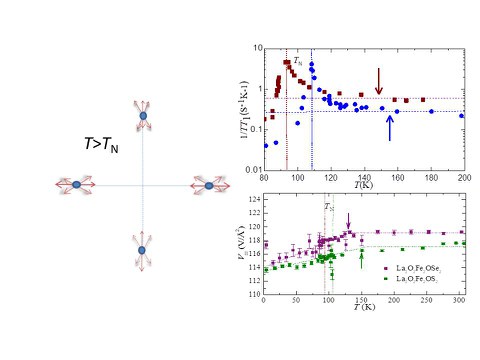Feb 08, 2021
Forschung: Nematische Fluktuationen in Eisen-Oxychalcogenid-Mott-Isolatoren
A nematic phase is formed when a discrete rotational symmetry is broken, while the translational symmetry is preserved. Dynamic precursors, i.e. nematic fluctuations, occur in a wide range of physical systems from biological molecules to cuprates and iron pnictide high temperature superconductors. Despite significant efforts it is unclear whether nematicity in pnictides arises from electronic spin or orbital degrees of freedom. This work presents a combined experimental and theoretical study of the iron based Mott insulators La2O2Fe2OM2 (M= S, Se), which are structurally similar to pnictides. The important finding of this work is the presence of nematic spin fluctuations up to 50 K above the long-range antiferromagnetic ordering temperature TN observed through the temperature dependence of the Mössbauer electric field gradient and the Nuclear Magnetic Resonance spin-lattice relaxation rate (shown in the figure). These results shed light on the debate whether nematic spin correlations are caused by nested Fermi-surface states or by correlation-induced local degrees of freedom. The absence of a Fermi surface here rules out the former. In these materials the degeneracy of the iron dxz and dyz orbitals is lifted locally by their structural environment. This gives rise to non-collinear nematic spin fluctuations which preserve the fourfold rotational symmetry of the lattice (see figure).
B. Freelon, R. Sarkar, S. Kamusella, F. Brückner, V. Grinenko, S. Acharya, M. Laad, L. Craco, Z. Yamani, R. Flacau, I. Swainson, Y. Liu, H. Wang, J. Du, M. Fang, H.-H. Klauss,
Spin nematic phase in iron-oxychalcogenide Mott insulators,
NPJ Quantum Mater. 6, 4 (2021) (arXiv)

